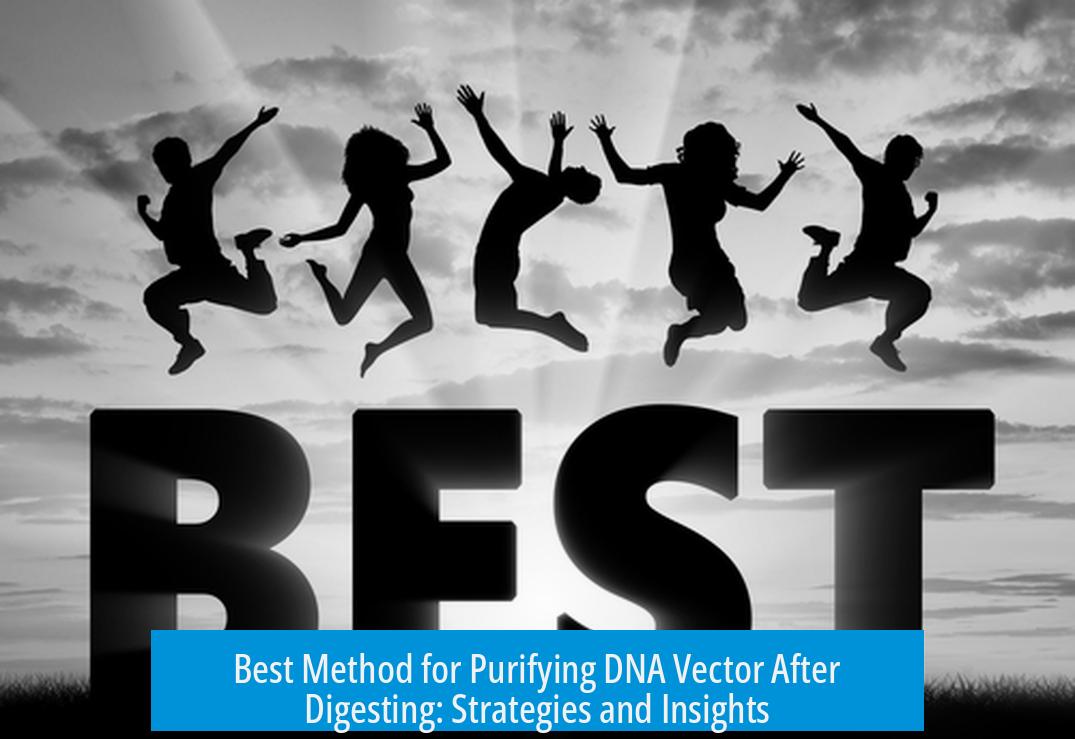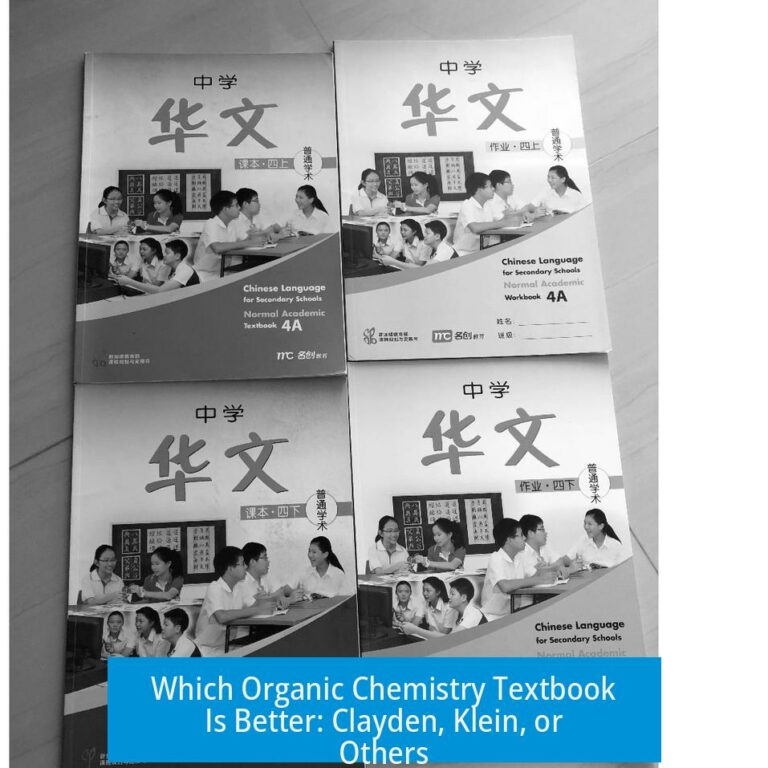Best Way to Purify DNA Vector After a Digest

The best way to purify a DNA vector after a digest is to perform gel purification to separate the linearized plasmid from uncut supercoiled plasmid and other fragments, minimizing background during transformation.
Understanding the Challenge: Background from Uncut Vector
When a DNA vector undergoes restriction enzyme digestion, incomplete digestion often results in residual uncut plasmid. This uncut plasmid retains its supercoiled form and transforms cells very efficiently, causing high background in downstream cloning experiments. Even if digestion is 99% efficient, a small fraction of uncut DNA remains and can result in thousands of unwanted colonies during transformation.
- For example, digesting 100 ng of plasmid at 99% efficiency leaves approximately 1 ng of uncut supercoiled plasmid.
- With typical transformation efficiencies of 1×107 cfu/μg, this residual uncut plasmid can generate 1×104 colonies per ng of uncut DNA.
- This background can overshadow genuine recombinants and complicate screening.
Gel Purification: The Recommended Strategy
Gel purification is widely endorsed as the most effective method for purifying DNA vectors after digestion. It physically separates the linearized plasmid band from uncut and partially digested plasmids or other fragments, greatly reducing background.
- Run the digest on an agarose gel capable of distinguishing supercoiled, linearized, and fragmented plasmids.
- Excise the band corresponding specifically to the linearized vector from the gel.
- Extract the DNA using a gel extraction kit or another suitable purification method.
This approach ensures that only the desired linearized vector is recovered. Although it consumes time and resources, gel purification effectively lowers transformation background and improves cloning success rates.
Why Alternatives Like SPRI Beads (Ampure) Are Less Suitable
SPRI bead-based purification methods, such as Ampure XP beads, provide a rapid, scalable approach for DNA cleanup but have limitations for post-digest vector purification.
Direct Cleanup of Digestion Mixtures
Mixing SPRI beads directly with the digestion reaction recovers all DNA above a certain size (usually > 100 base pairs) non-selectively. Instead of isolating the linearized plasmid, beads capture uncut vectors and other DNA fragments. This failure to discriminate between different DNA forms leaves the problem of background unresolved.
Purifying DNA from Gel Slices Using SPRI Beads
While SPRI beads are excellent for purifying DNA from aqueous solutions, their use in extracting DNA directly from agarose gel slices is problematic.
- The agarose matrix must first be dissolved using a chaotropic agent, which can interfere with SPRI chemistry.
- Moreover, SPRI bead protocols are not optimized for agarose contamination, risking low yield or impurities.
Using SPRI Beads for Size Selection
Size selection with SPRI beads enriches for certain fragment sizes but does so in a bell curve distribution rather than a sharp cut. Small fragments may co-purify along with the target. This is less precise than gel extraction.
If the target fragment differs greatly in size from contaminants, a two-sided size selection using SPRI beads might help reduce unwanted DNA. However, verification by running an analytical gel or fragment analyzer is essential to confirm the purity.
Number of Fragments After Digest and Purification Approaches
Choosing the purification method depends largely on the digestion pattern:
- Single-Cut Digests: When the vector is cut only once, the primary concern is separating linearized plasmid from uncut plasmid. Gel purification excels here by isolating the linearized vector band distinctly.
- Multi-Cut Digests: Digests producing multiple fragments require isolation of a specific fragment of interest. Gel electrophoresis is the optimal method for visualizing and excising the precise band.
SPRI beads cannot adequately separate multiple fragments due to limited size selectivity.
Alternative Approach: Cloning Directly From Gel Without Purification
Some protocols allow direct ligation of DNA within solubilized agarose slices, eliminating the need for gel purification. This method reduces the risk of DNA loss during extraction and purification steps.
- After gel electrophoresis, excise the desired band and solubilize the agarose.
- Use the dissolved gel slice directly for ligation reactions.
- This approach requires careful downstream screening because contaminants may still be present.
This technique is beneficial when dephosphorylation is performed on the vector to reduce background, and when sufficient screening capacity exists.
Detailed protocols for in-gel ligations exist, such as the method outlined by the Maddock Lab (Maddock Lab Protocol).
Summary Table: Comparison of Purification Methods Post-Digest
| Method | Purity | Background Reduction | Time Required | Suitability |
|---|---|---|---|---|
| Gel Purification | High (physical separation) | Significant reduction of uncut vector background | Moderate to long | Best for single- and multi-fragment digests |
| SPRI Beads Direct Cleanup | Low (non-selective DNA recovery) | Minimal; uncut vector present | Short | Suitable for removing enzymes, not fragment selection |
| SPRI Beads Size Selection | Moderate (enrichment, not complete separation) | Partial, depends on fragment size difference | Short to moderate | Works if fragment sizes differ greatly |
| Direct Ligation from Gel Slice | Moderate (no extraction loss) | Depends on dephosphorylation and screening | Variable, depends on screening effort | Alternative when minimizing DNA loss is critical |
Additional Tips for Successful Vector Purification
- Use fresh restriction enzyme to maximize digestion efficiency and minimize residual uncut plasmid.
- Include adequate controls during transformation to assess background levels.
- If using gel purification, minimize UV exposure by working with blue light transilluminators when possible to reduce DNA damage.
- After gel extraction, perform ethanol precipitation or buffer exchange to remove residual salts that may inhibit ligation.
- When necessary, treat linearized vectors with phosphatase to prevent self-ligation, further decreasing background.
Key Takeaways
- Gel purification is the best method for isolating linearized DNA vector after digest and significantly lowers background in transformation.
- Residual uncut supercoiled plasmid can cause high background even with 99% digestion efficiency.
- SPRI bead purification cleans up DNA non-selectively and lacks the resolution of gel electrophoresis.
- Gel extraction is especially important when working with multiple fragments or single-cut digests to separate desired vector forms.
- Direct ligation from solubilized gel slice is an alternative strategy, but requires careful screening.





Leave a Comment